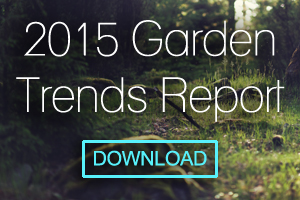For this week’s speaker series, Garden Media was thrilled to sit down with a true garden rock star over lunch. Doug Tallamy discussed biodiversity, native plants and the future of the industry.
Tallamy is the Professor of Entomology and Wildlife Ecology at the University of Delaware. He’s the author of Bringing Nature Home, The Living Landscape and an op-ed contributor for the New York Times.
He has authored 80 research articles and has taught Insect Taxonomy, Behavioral Ecology, Humans and Nature, Insect ecology and other courses for 34 years.
Tallamy answered questions and stressed the importance of supporting food webs, pollinators and native plants. He said we need to create living landscapes where life thrives, not "dead zones" that do not support ecosystems.
Continue reading for more information about Tallamy and his visit with Garden Media.
A lot of people garden strictly for beauty. Do all gardeners have a responsibility to nature and wildlife?
Every land owner has a responsibility to be a good land steward. Humans live off services different ecosystems provide. Without these services, life as we know it would end. Every human needs to attract as many different types of plants and animals as they can to their backyard ecosystems. Everybody has a responsibility to maintain as much life at home as possible.
How can gardeners create and maintain biodiversity in their yard?
- Reduce the amount of lawn.
- Plant more native species. Start with woody trees and shrubs, such as oaks, willows, and Viburnums. Then, add golden rod and cardinal flower.
- Build a 3-D landscape in your yard.
- Think about structure when choosing what to plant.
- Form a plant community comprised of diverse species.
- Focus on the most productive plants.
How can people who live in urban areas contribute to plant biodiversity in their communities?
When cement is the default landscape, it’s tough. Take the High Line for example. Most of the people who visit that particular garden live in New York City. If we can create that type of garden there, we can do it anywhere.

Those who live in urban areas can volunteer in their communities and help manage and diversify property that isn’t their own. They can also ask their apartment complex managers to include more green spaces in and around the building. Rooftop gardens and fire escape gardens are also a great alternative.
What are your favorite plants to attract pollinators?
We should plant what the bee specialists need. Goldenrod supports the most bee species and willow is second best. I love white oak and alternate-leaf dogwood, too. If you plant those, generalist pollinators will come. You need to plan for blooms from April to September.
Why do people tend to have tree blindness?
Oh, that's a new term for me. I think if people saw trees for their benefits, they'd be less likely to remove them. Maybe people should be charged for the amount of carbon sequestration removed when they chop down a tree or for the cost to manage the storm-water run-off. And not to mention the cost of the habitat lost.
For more information about Tallamy, visit http://www.bringingnaturehome.net/.
















